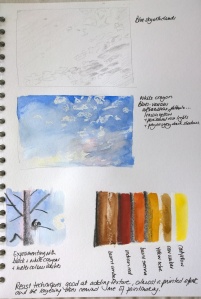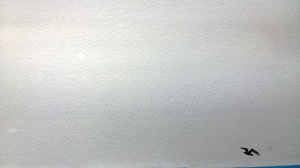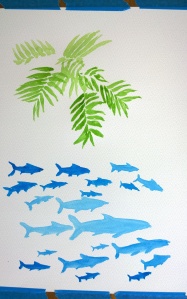Clingfilm
A4 Watercolour NOT 300 gsm, Purple Lake mixed with Viridian, sable brush 10, clingfilm. Really enjoyed the outcome of this.
Salt crystals
A4 as the other two, this is Alizarin Crimson mixed with Viridian and all three textures are applied to the one painting. Salt is in the foreground, the trees and the fence are made using a craft knife and the trees in the back are scraped and also made with cling film. The tonality is not right, I feel the fence should be lighter and the back darker in areas, I may yet try to alter those, but this shows the different techniques to good effect, I think.
Image as above with changes: washed off some of the fence and the trees in the foreground, added another layer of clingfilm effect to the background and when dry, picked out some of the detail.
Scarifying, scraping and texturing
A4 Watercolour NOT 300gsm, Alizarin Crimson and Viridian, sable brush 10, sand paper and craft knife. This technique seems to add movement to a painting.






























You must be logged in to post a comment.